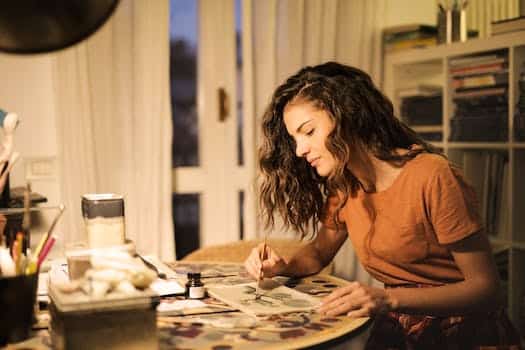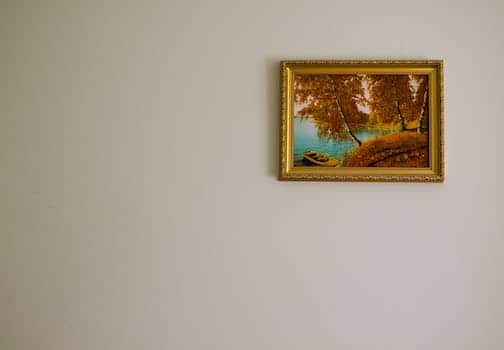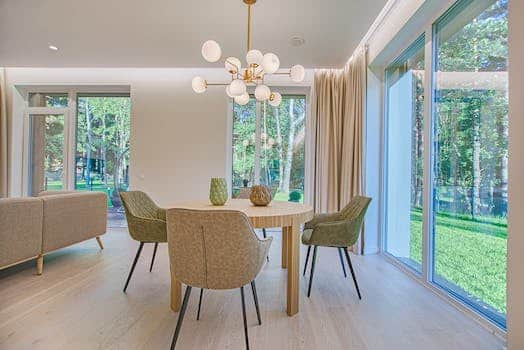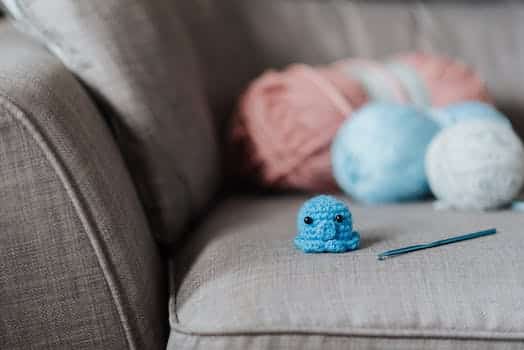Do you wish you could replace the dull old furniture you have? Want to give your house a facelift without breaking the bank? Stop looking! This post will show you 10 unique ways to revamp your furniture and give your house a whole new look. These do-it-yourself tasks, which range from painting and reupholstering to decoupage and stenciling, are simple and entertaining to complete. Prepare to let your imagination go wild as you transform your furniture into a showpiece.
- 1. Introduction
- 1.1. What are creative furniture makeovers?
- 1.2. Why consider creative furniture makeovers?
- 1.3. Benefits of creative furniture makeovers
- 1.4. Tools and materials needed for creative furniture makeovers
- 1.5. Tips for successful creative furniture makeovers
- 2. Painting Furniture
- 2.1. Choosing the right paint
- 2.2. Preparing the furniture for painting
- 2.3. Painting techniques for creative effects
- 2.4. Adding patterns and designs
- 2.5. Finishing touches
- 3. Upcycling Furniture
- 3.1. Finding inspiration for upcycling ideas
- 3.2. Choosing the right furniture to upcycle
- 3.3. Tools and materials needed for upcycling
- 3.4. Creative upcycling techniques
- 3.5. Examples of upcycled furniture
- 4. Decoupage Furniture
- 4.1. What is decoupage?
- 4.2. Choosing the right materials for decoupage
- 4.3. Preparing the furniture for decoupage
- 4.4. Adding patterns and designs with decoupage
- 4.5. Finishing touches
- 5. Stenciling Furniture
1. Introduction
Makeovers to your furniture can radically change the vibe of your home without draining your money account. Repurposing old, worn furniture is a great way to add a touch of individuality to your home without spending a lot of money. In this post, we’ll take a look at 10 unique furniture transformations that are sure to spark ideas for your own DIY projects.
1.1. What are creative furniture makeovers?
Makingover old furniture is a great and cheap method to give your house a new look. If you want to give your home a new look without spending a lot of money, consider giving some of your current pieces a new purpose or upgrading them. It’s good for the planet, sure, but it also lets you make your house a home. With some ingenuity and do-it-yourself skills, you can transform a worn out piece of furniture into a conversation starter that will make your friends green with envy.
1.2. Why consider creative furniture makeovers?
Old, worn furniture may be given new life and a fresh sense of style with a little bit of imagination and hard work. It’s a great way to save money and have fun while giving your home a fresh look without harming the planet. It’s possible to alter furniture in countless ways, from painting and reupholstering to decoupage and stenciling. When you can make unique pieces that are a reflection of who you are, why buy furniture that everyone else has?
1.3. Benefits of creative furniture makeovers
Making use of your ingenuity, you can update the style of your home without spending a fortune by repurposing old furniture. You can make your home more one-of-a-kind and representative of your taste and personality by giving antique furniture a new lease of life. In addition to saving money, there are several advantages to giving old furniture a new look, which makes this option appealing to both homeowners and renters. Giving your furniture a creative makeover has several benefits, like lowering waste and environmental effect and increasing the space’s personality and charm. In this post, we’ll look at 10 unique ways that furniture has been repurposed to provide you ideas for your next do-it-yourself project and refresh your space.
1.4. Tools and materials needed for creative furniture makeovers
You only need a few simple supplies to give your home a whole new look with some ingenious furniture makeovers. Depending on the nature of the upgrade you intend to perform, the items on your list of necessities may change. However, for most furniture makeovers, you’ll need only the following basic tools and materials:
Tools: – Sandpaper – Brushes
Upholstery fabric, paint/stain, a screwdriver, and a bolt of cloth
Tools: Glue, Staple Gun, Varnish
You may use these supplies to make any old piece of furniture into a showpiece for your home.
1.5. Tips for successful creative furniture makeovers
Creative furniture makeovers are a terrific way to liven up your home decor without breaking the bank. You can show off your unique sense of style and ingenuity while giving new life to heirlooms that have seen better days. However, you need to put in some time and effort to achieve a good result when refinishing furniture. Here, we’ll show you how to improve your next project so that it turns out beautifully.
2. Painting Furniture
Furniture that has seen better days can be given new life by being painted. A new coat of paint can radically transform the look of a piece of furniture, whether you opt for a bright, eye-catching color or a more subdued tone. It’s also a cheap method of refreshing your interior design. It’s important to thoroughly prepare the furniture before painting it, and to use the paint that’s most suited to the piece’s substance and surface. You can breathe new life into old furniture with just a little bit of work and imagination.
2.1. Choosing the right paint
When painting furniture, it’s important to pick the correct paint. Make sure the paint will stick to the surface and leave a durable coating. Paint selection is influenced by a number of criteria, including the furniture’s material, the intended color, and the required level of durability. It’s also recommended to use a primer before painting to improve paint adhesion and create a smooth surface for the final coat.
2.2. Preparing the furniture for painting
You need to get your furniture ready before you start painting it. Take off any and all fasteners first, including knobs, handles, and hinges. The next step is to wipe down the surface of the furniture to get rid of any dirt, dust, or grime. If the surface is smooth, you may need to sand it down to help the paint stick. Put wood filler into any openings, and then wait for it to dry. Finally, use a tack cloth to remove any last traces of dust or dirt from the surface.
2.3. Painting techniques for creative effects
Many different artistic effects can be achieved through the act of painting furniture. Distressing is a common choice; it entails sanding down parts of the item or using a dry brush method to deliberately create a worn and weathered effect. Stenciling is another method for decorating furniture with elaborate patterns and decorations. Color blocking, ombre, and metallic paints all provide striking visual effects. Painting your furniture is a fun and easy way to give your home a new look and express your individual style.
2.4. Adding patterns and designs
Old, boring furniture can be given new life with the addition of patterns and designs. Stenciling, decoupage, and even hand painting are just a few of the methods for decorating furniture with patterns and designs. These methods work as well on tables, chairs, and dressers. You can make a one-of-a-kind and eye-catching piece of furniture that nobody else has by adding patterns and designs.
2.5. Finishing touches
Finishing touches are essential after painting furniture so that it stands out from the crowd. The paint can be distressed by sanding in select areas to provide a shabby-chic, antique appearance. Applying a clear coat or wax over the paint is another option for protecting it and improving its appearance. Knobs and handles, as well as other forms of ornamental hardware, can be added for a truly unique look. Finally, think about how you may display the furniture’s new design by accessorizing it. These additions will complete the makeover of your painted furniture.
3. Upcycling Furniture
Repurposing old pieces of furniture is a cost-effective method to give your house a new look. Don’t rush out and buy brand new furnishings before you’ve explored the possibility of repurposing the ones you already have. Repurposing used furniture requires only imagination and the ability to use basic tools and materials. Makeovers to your furniture are a fun and inexpensive way to give your living room, bedroom, or dining room a new feel. There is no limit to creativity when it comes to upcycling furniture using techniques including painting, reupholstering, decoupage, and stenciling.
3.1. Finding inspiration for upcycling ideas
It’s not always easy to come up with ideas for your next furniture upcycling project. The good news is that there are a lot of places you can go to get ideas, such as books, magazines, websites, and even thrift stores and flea markets. If you’re looking for some innovative furniture makeover ideas, a fantastic place to start is by perusing upcycling projects on social media sites like Instagram and Pinterest. You can also try experimenting with various materials and methods, or discovering new sources of motivation such as nature, art, or architecture. The possibilities for upcycling furniture are actually unlimited, so it’s important to keep an open mind and be willing to try new ideas.
3.2. Choosing the right furniture to upcycle
Picking the proper piece of furniture for a makeover can make all the difference. Look for furniture made of solid wood that is well-built and has unique carvings, finishes, or shapes. Don’t buy anything if you see signs of water or mold damage. A vintage dresser might be ideal for a bedroom, but it wouldn’t be a good choice for a TV stand in the living room if that’s not the style of your home. The potential for upcycling is boundless with the proper component.
3.3. Tools and materials needed for upcycling
Repurposing old pieces of furniture is a great way to spruce up your home without spending a fortune. There are some necessities before you can begin. Some basics are as follows.
As in, sandpaper
2 Brushes for painting
Varnish or coloring
Putty for wood
#5 Phillips-head
Cushion cover number six
Nail gun 7
8. a hammer
9. Nails
10. Drill
Using these supplies, you can give your old furniture a new lease on life and create conversation pieces you’ll be proud to display.
3.4. Creative upcycling techniques
Giving used furniture a new purpose through upcycling is a fantastic idea. You can give old, worn furniture a new lease of life with only a little ingenuity and some basic do-it-yourself skills. Here are 10 innovative approaches to recycling:
First, give it a splash of color.
2. Install modern fittings. 3. Cover in decoupage
4 Make your own one-of-a-kind pattern by using stencils
Insert a replacement surface or top
Recover with a lively new fabric, number 6.
Seven, repurpose drawers as shelving
8. Cover a surface with contact paper to make it look like marble or wood.
Use a damaged or weathered coating as step 9.
Ten. Dress it up with some molding or trim
Dressers, tables, chairs, and cabinets are just some of the many furniture items that might benefit from these methods. With some time and thought, you may make unique decorations that reflect your own sense of design and taste.
3.5. Examples of upcycled furniture
First, converting a dresser into a sink cabinet.
2. Creating a headboard out of old shutters
Third, transforming a wooden pallet into a new piece of furniture.
Converting a stepladder into a library
Converting a crib into a bench
Converting an old suitcase into a coffee table
Seventh, a repurposed door serves as a dinner table.
Making a picture frame out of a window sash
9 Using an old dresser as a new TV console
10 Using empty wine bottles to make a one-of-a-kind lamp
4. Decoupage Furniture
Using decoupage, you can give your old, worn furniture a whole new lease on life. Using glue or decoupage media, you attach paper or fabric shapes cut out in the desired design to the surface of the furniture. The finished product is an eye-catching, one-of-a-kind piece of furniture. Decoupage is a craft that allows you to express your individuality by making something truly one-of-a-kind.
4.1. What is decoupage?
Decoupage is a decorative art form that entails layering varnish or lacquer over pieces of paper or cloth that have been pasted onto a surface. The end product is an attractive, textured pattern that may be utilized to revamp furniture, decorative accessories, and more. This age-old practice has been used to give countless homes a special look and feel.
4.2. Choosing the right materials for decoupage
Decoupage is an interesting and creative technique to give new life to ancient furniture. The type of furniture you’re working with and the desired aesthetic direction should inform your choice of decoupage materials. Decorative paper, tissue paper, fabric, and even wallpaper are all fair game for a decoupage project. It’s crucial to use materials that can resist the rigors of regular use. Materials should also be selected to harmonize with the color scheme and design aesthetic of the furnishings. You can make anything look like a work of art if you have the correct ingredients and a little imagination.
4.3. Preparing the furniture for decoupage
It’s crucial to have the furniture ready for decoupage if you want the makeover to go well. In order to prepare your furniture for decoupage, you should first clean and sand it. The next step is to select the appropriate size decoupage paper or fabric and cut it to size. If you want to give your furniture an even more dramatic makeover before you decoupage it, you could try painting it beforehand. Using decoupage adhesive or Mod Podge, you can begin putting your decoupage material to your prepared furniture. Apply the material slowly and gently, getting rid of bubbles and creases as you go. When you’re done, give your furniture plenty of time to dry before sealing your decoupage artwork.
4.4. Adding patterns and designs with decoupage
Decoupage’s capacity to allow for the addition of patterns and decorations to furniture is one of its most intriguing features. Decoupage is a great way to add personality and style to otherwise dull furniture, such as a basic dresser or end table. From floral prints and geometric shapes to vintage-inspired illustrations, the design possibilities are practically endless. You can transform your furniture from drab to spectacular by using decoupage if you put in the time and effort.
4.5. Finishing touches
Using a sealer or varnish to protect the surface of your decoupaged furniture from wear and tear is the perfect way to put the finishing touches on your project. Knobs and handles are examples of decorative components that can be added to improve the appearance. Maintaining the finest possible appearance of your furniture requires regular cleaning and dusting.
5. Stenciling Furniture
Stenciling furniture is a fun and creative way to personalize your space. Stencils let you to make elaborate patterns and decorations on your furniture without breaking the bank on high-priced supplies. A steady hand, some paint, and a stencil are all that’s required. Furniture like dressers, desks, and cabinets are ideal candidates for stenciling because of their flat surfaces. You can make a simple pattern with just one stencil, or you can use several together to make a more elaborate one. To keep the stencil in place and the paint from bleeding under it, use painter’s tape. If you put up the time and effort, you can make your old furniture look like new.
5.1. Choosing the right stencil
Selecting the proper stencil is crucial when stenciling furniture. It’s important to think about the finished size of the artwork you’ll be stenciling. If you want to stencil a dresser or tabletop, you might choose a larger stencil, but a chair or accent piece would benefit more from a smaller stencil. Think about the stencil’s durability by thinking about the substance it’s made of. A plastic stencil could be more worthwhile than a paper one in the long run. You can stencil whatever design you like onto any piece of furniture.
5.2. Preparing the furniture for stenciling
You need to get the surface of your furniture ready for stenciling before you start. Get started by giving the furniture a complete soap and water washing. After it dries, give it a gentle sanding with fine-grit paper. The paint will stick better and the surface will be smoother if you do this first. Apply wood filler to any holes or dings and sand them down until the furniture is smooth. Finally, before you begin stenciling, clean the furniture off with a tack cloth to eliminate any dust or debris.
5.3. Stenciling techniques for creative effects
Using stencils, you may give your furniture a one-of-a-kind look. You can get various results by employing various methods. Dabbing paint onto furniture with a stencil brush is one method. To get a stippled effect, paint can also be applied with a sponge roller. For an even more professional look, you might try spraying the stencil onto the furniture with glue. Create something truly one-of-a-kind by playing around with color and design.
5.4. Adding patterns and designs
Decorating furniture with patterns and decorations is a terrific way to update its appearance. Stenciling is a viable option for this. Using a stencil, a design is painted directly onto the piece of furniture. Stenciling can be used to create everything from intricate geometric patterns to delicate floral designs. Pick a stencil that goes with the design of your home and the furniture you already have. You can make your furniture look like a masterpiece with practice and perseverance.
5.5. Finishing touches
After you’ve finished stenciling, you can add the final touches to your newly revamped furniture. The edges can be distressed with sandpaper for a shabby chic, vintage appearance. Applying a clear wax or polyurethane coat over the stenciled design is another way to make it last. You can improve the piece’s aesthetic and coordinate it with the rest of your furniture by installing decorative hardware, such as knobs or pulls. When you’re done, your stenciled furniture will look polished and ready for prime time in your home.
Conclusion
In conclusion, with some ingenuity and work, you can completely revamp your living quarters with these 10 innovative furniture makeovers. Not only will you be able to save money, but the one-of-a-kind and charming accents you create will truly make your home your own.






These 10 innovative and imaginative DIY home decor ideas from [object Object] provide a refreshing approach to enhancing ones living…